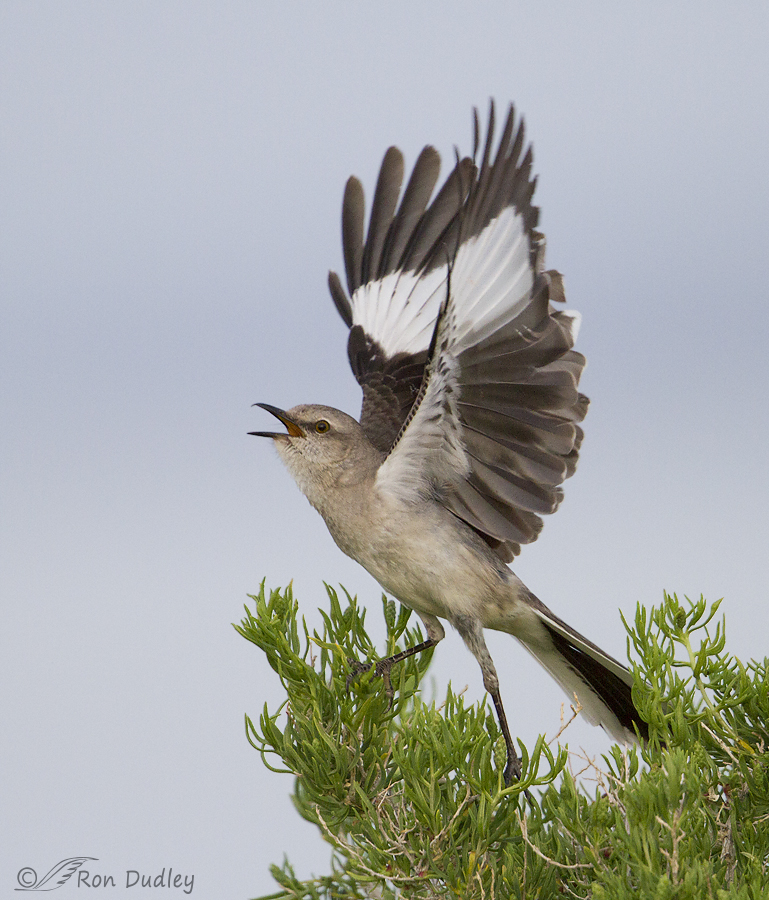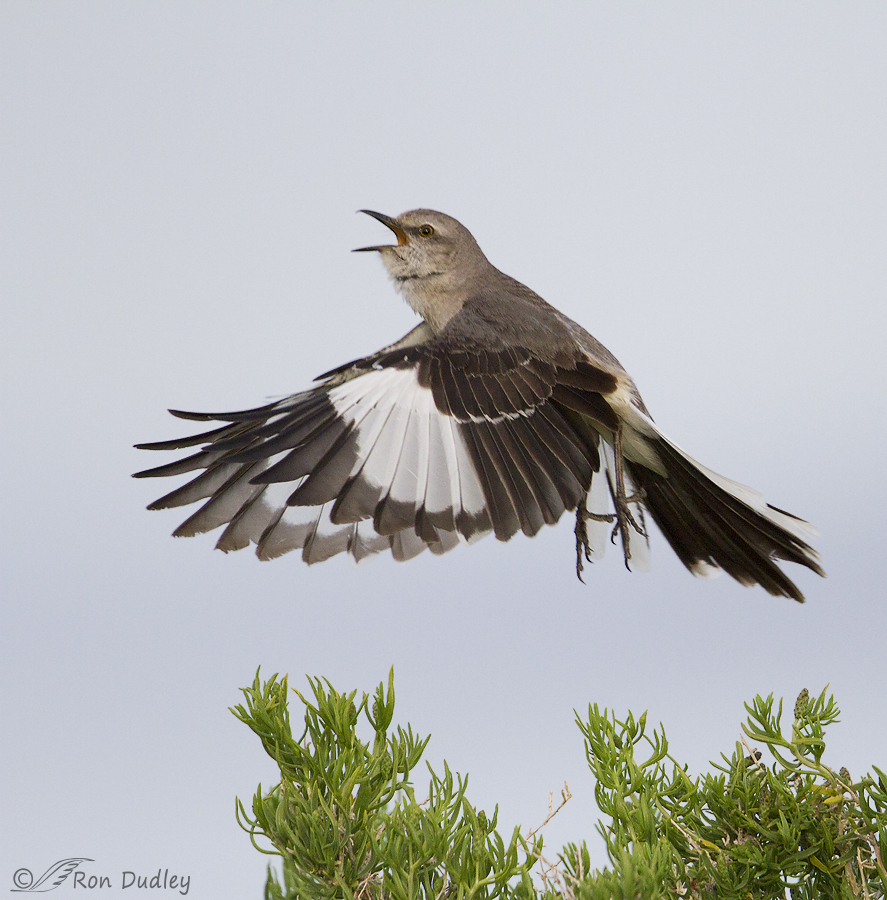On a dark, cloudy morning on Antelope Island last month I had an opportunity with a displaying Northern Mockingbird. The shooting conditions were difficult but I decided to play at the edge of the limits of my gear and see what I could get. These shots are not sequential of the same take-off and landing but in the order I’ve presented them I think they illustrate the behavior reasonably well.
1/2000, f/5.6, ISO 1000, Canon 7D, Canon EF500mm f/4L IS II USM +1.4 tc, not baited, set up or called in
As I’ve reported previously, when displaying these birds repeatedly launch themselves into the air, usually from the same perch, and then parachute back down to almost the identical spot on the perch. And they sing enthusiastically during the entire performance. Here the mockingbird is about to take off vertically.
1/2500, f/5.6, ISO 800, Canon 7D, Canon EF500mm f/4L IS II USM +1.4 tc, not baited, set up or called in
In this shot the bird is on its way up…
1/2000, f/5.6, ISO 800, Canon 7D, Canon EF500mm f/4L IS II USM +1.4 tc, not baited, set up or called in
and here it’s parachuting back down to the perch, a few inches behind the spot from which it took off. Parts of the bird aren’t quite as sharp as they could be but this is the best I was able to get while it was parachuting down.
I really pushed the limits of my gear in this low light. In order to get enough shutter speed without going above ISO 800-1000 I deliberately underexposed the images a little in camera and then brought them back up during processing. Sometimes you do what you have to do and then either live with the results or delete them. I kept these images because they documented the behavior reasonably well.
Ron





What focus settings do you usually use for small birds?
It varies, John. I usually post my camera techs under my images, as I’ve done here.
Just amazing shots Ron!
Charlotte
Love it!
I imagine you would lose a few shots laughing while you watch this.I too appreciate you sharing about ISO and shutter speed.
A big thank you to everyone for the thoughtful comments on today’s post. I apologize for not responding to comments in my normal fashion but “life” just got in the way this time. I’ve spent most of the day behind the 8-ball and I’m just now trying to catch up…
What an absolute treat – for you to see and capture and for me to start my day on (not yet 5 this morning). Thank you.
Bachelor mockingbirds will sing nearly non-stop day and night until they attract a mate. I live in the south where they are very prevalent. I love watching them and listening to them.
I’ve watched a lot of Mockingbirds in my life, but have never seen this behavior. I think these shots do a great job of showing what you’ve described. And I’m glad to see that the carefree jumper is obviously paying attention to where he will land.
Great performance. I can’t decide which I prefer the most that of the bird or yours.
I never tried to go above ISO 800. My settings usually are ISO 100-800 and the shutter speed between 1/1000 and 1/3200.
Thank you very much for today’s lesson.
This bird looks like he is saying, “JOY,” in body (and wing) language…what a happy way to start the day! I can almost hear his song…this is a great example of the phrase “jumping for joy”….
Mockingbirds were one of my favorite birds growing up in Maryland, and I loved their calls. I was entertained to see its mouth is open at all times in this series! I’m glad you captured this sequence.
Thanks, Alison. Yes, this time of year that mouth is very often open. They are champion singers and what a repertoire!